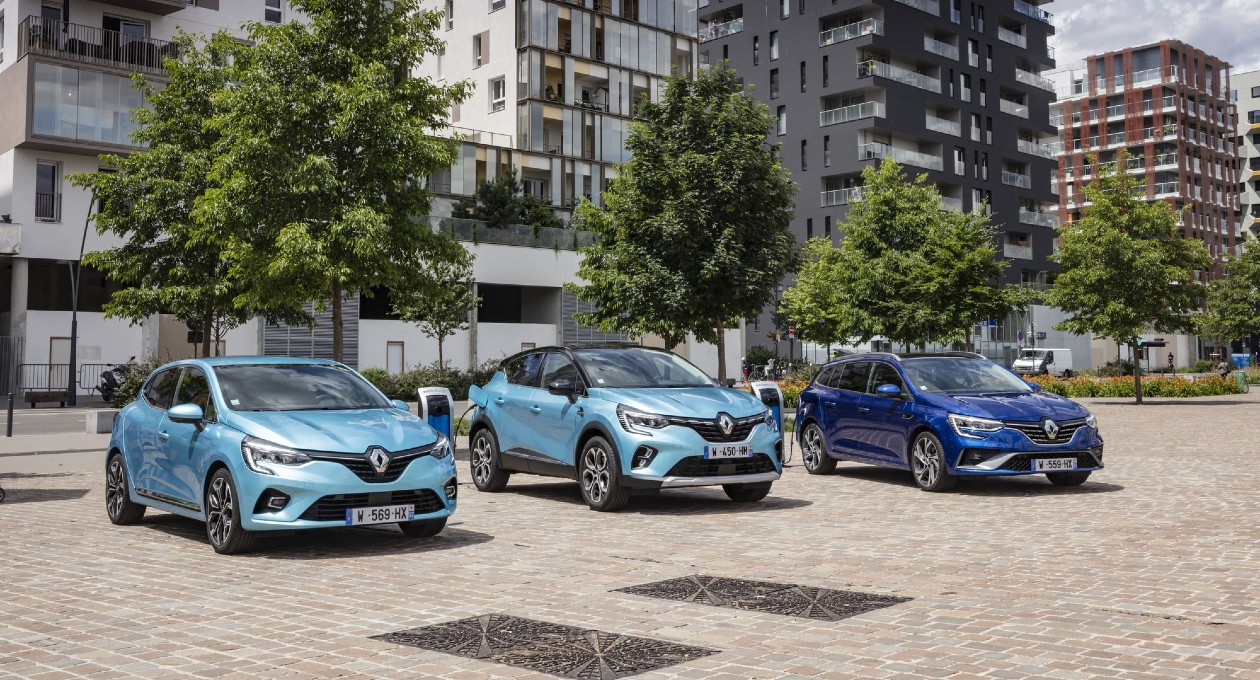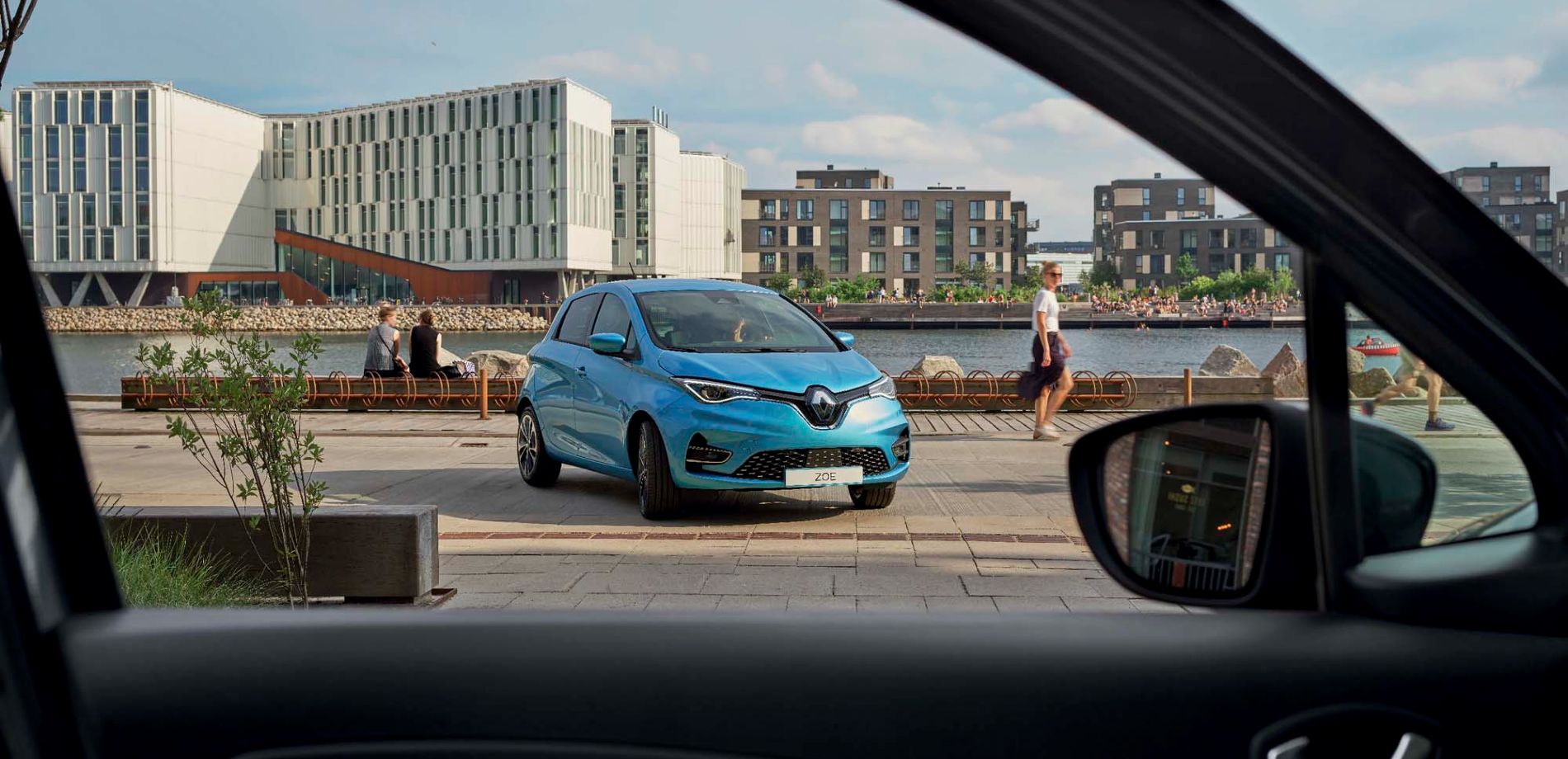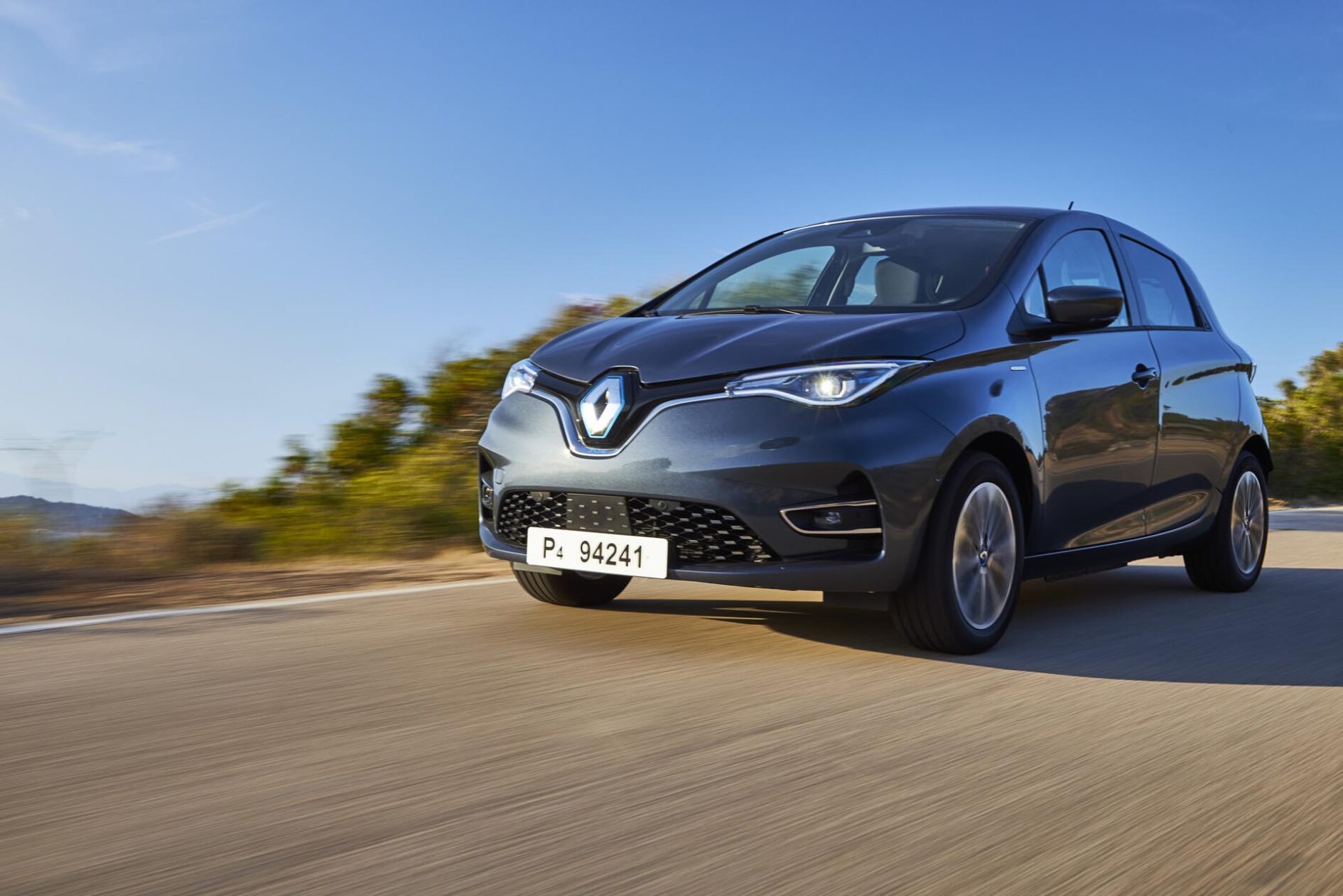

What are the advantages of a hybrid car?
The hybrid car (also shortened to HEV for “Hybrid Electric Vehicle”) is designed around a simple principle: a combustion engine (gasoline or diesel) and one or several electric motors working together. This leads to a reduction in fuel consumption and CO2 emissions thanks to its ability to run in all-electric mode.
On the Renault Clio E-TECH hybrid, which uses technology known as “full-hybrid” — in other words not rechargeable — this all-electric driving (which can cover up to 80% of city driving, for example) reduces urban fuel consumption by 40% in comparison to an equivalent combustion-powered model.
What are the advantages of a plug-in hybrid car?
The plug-in hybrid car (or PHEV, for “Plug-in Hybrid Vehicle”) operates according to the same principle as the hybrid car, but also features a socket for recharging the vehicle’s battery on the electric grid, as well as a larger battery than that of a standard hybrid car.
The advantage of this solution is that it provides more electric range to the plug-in hybrid vehicle. With regards to the machine, this of course lowers the vehicle’s fossil fuel consumption and makes it possible to combine the benefits of combustion power (autonomy on long journeys) and those of rechargeable electric power (more environmentally-friendly motor power which costs less to run) within the same vehicle.
On a short or long journey, therefore, Renault’s plug-in hybrids like the Captur E-TECH Plug-in hybrid — offer a reduction in fuel consumption of up to 75%, provided that the electric motor is used daily and with one recharge per day if required.

How they work: what’s the difference between a hybrid car and a plug-in hybrid car?
The E-TECH hybrid range from Renault includes hybrid vehicles and plug-in hybrid vehicles. In the former category, the Renault Clio E-TECH hybrid offers motorists both the power of a combustion engine and the vigor of an electric motor. This addition to the Clio range also gives the iconic model the ability to drive silently and without producing emissions.
On the Captur E-TECH Plug-in hybrid, Renault’s SUV rechargeable hybrid version, the option of charging from the electrical grid increases the 100 % electric vehicle range of the motor, extending the periods when the car can run like a fully electric vehicle.
Electric range: what’s the difference between a hybrid car and a plug-in hybrid car?
A Clio E-TECH hybrid, with its hybrid system, can run on all-electric power for 80% of the time in urban settings, in other words driving without consuming fuel or producing emissions*. Its electric range is lower than that of a plug-in hybrid vehicle due to the absence of a battery that can be plugged into the electrical grid.
For its part, a vehicle like the Captur E-TECH Plug-in hybrid, representative of plug-in hybrid technology, provides 50 kilometers of WLTP** range using the electric motor on a mixed cycle. Around 3 hours are required to recharge its battery power of 9.8 kWh. The electric range is sufficient for everyday trips without the need for the combustion engine, as long as the battery is recharged when necessary. When the battery is empty, the Captur E-TECH Plug-in behaves like a standard hybrid vehicle. The combustion engine generally comes into play during long journeys, where it works alongside the electric motor. This modularity makes for an enjoyable driving experience.

Charging: what’s the difference between a hybrid car and a plug-in hybrid car?
As its name implies, a plug-in hybrid car includes a charging socket that is not found on conventional hybrid cars. Roadside public terminals, recharging stations along highways (except fast-charge), Wallboxes and domestic outlets can all provide the electricity required for the vehicle to run in 100 % electric mode, while non-rechargeable hybrid models need to visit a gas station to refuel.
However, both hybrid and plug-in hybrids use kinetic energy from braking and slowing down and convert this into electricity; thus gaining several kilometers of all-electric range. They also both benefit from all-electric start-up and the much-appreciated “take-off” effect.
Fuel consumption: what’s the difference between a hybrid car and a plug-in hybrid car?
The hybrid car’s use of both an electric motor and a combustion engine results in a considerable drop in fuel consumption. A Clio E-TECH hybrid therefore consumes 4.3 liters per 100 kilometers WLTP* on average, or up to 40 % less than its equivalent standard gasoline-powered car, thanks to all-electric traction when driving around town up to 80% of the time.
The fuel consumption of a plug-in hybrid car is directly linked to the vehicle’s electric charge level. The motorist who charges their vehicle daily can drive using only electric power for everyday trips of less than 50 kilometers, including journeys involving road and highways. A Captur or Megane E-TECH Plug-in is also capable of all-electric drive up to 135 km/h. This lowers the machine’s average consumption of fossil fuels.

Price: what’s the difference between a hybrid car and a plug-in hybrid car?
While plug-in hybrid cars are comparatively more expensive to purchase than their combustion-powered equivalents, this needs to be put into perspective, because the drop in fuel consumption drastically reduces their running costs. There are also numerous financial incentives designed to encourage drivers to go electric. Certain European countries, like France and Germany, even offer purchase bonuses for hybrid vehicles able to travel in all-electric mode for several dozen kilometers — criteria to which plug-in hybrid vehicles comply.
For now, Renault’s non-rechargeable hybrid vehicles are less expensive than the plug-in hybrid vehicles, which can be explained by the difference in models and onboard technology. A Clio E-TECH hybrid, therefore, offers a first step into electric mobility for a price roughly equivalent to that of a combustion-powered car.
To each his own motor system. Thanks to the hybrid and plug-in hybrid, more and more motorists can turn to new forms of mobility suited to their eco-driving style, needs and every type of use.
*Neither atmospheric emissions of CO2 nor pollutants while driving (excluding wear parts).
**WLTP range: Worldwide harmonised Light vehicles Test Procedure. The standard WLTP cycle consists of 57% urban driving, 25% suburban driving and 18% highway driving.
Copyrights : PLANIMONTEUR




